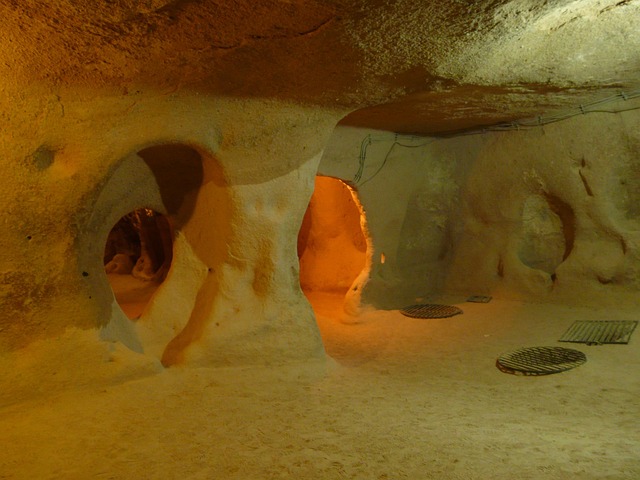Precise utility location is essential for safe and efficient potholing projects in both urban and rural areas. Advanced technologies like geospatial data, ground-penetrating radar (GPR), and sensors accurately map underground utilities before excavation. This minimizes service damage risks, enhances collaboration among stakeholders, and improves project timeliness. Modern tools such as GPR and precision GPS offer enhanced accuracy and efficiency, enabling faster completion times and reduced costs. In urban settings, best practices include meticulous planning, clear communication, safety protocols, specialized equipment, and thorough record-keeping. Rural operations face challenges in vast landscapes but benefit from integrating GPS technology with real-time data from utility providers for accurate mapping.
In the realm of infrastructure maintenance, pothole repair is an indispensable yet challenging task, especially in urban and rural settings. This article delves into the art of safe and efficient potholing, highlighting critical aspects like precise utility location—the cornerstone for avoiding underground disruptions. We explore advanced equipment and technology that enhance accuracy and streamline operations. Furthermore, we dissect best practices tailored to urban environments and address unique challenges in rural potholing, offering solutions for comprehensive, safe, and effective management.
Understanding Precise Utility Location: The Cornerstone of Safe Potholing
In the realm of potholing, whether for urban or rural infrastructure projects, understanding and accurately locating utilities is a cornerstone of safe and efficient operations. Precise utility location involves employing advanced technologies and methodologies to identify and map underground utilities such as water, sewer, gas, electric, and communication lines before excavation begins. This critical step is essential in mitigating risks like damage to vital services, which can lead to costly disruptions and safety hazards.
By integrating geospatial data, ground-penetrating radar, and other sensor technologies, utility locators can create detailed maps that pinpoint the exact positions of underground utilities. This precise information enables potholing teams to plan excavation strategies that avoid critical infrastructure, ensuring safe and efficient digging. Moreover, it facilitates effective communication among project stakeholders, including contractors, engineers, and utility providers, fostering a collaborative environment that prioritizes safety and minimizes project delays.
Equipment and Technology: Enhancing Accuracy and Efficiency in Potholing
Potholing, a critical process in construction and maintenance, has seen significant advancements through innovative equipment and technology. Modern tools now offer enhanced accuracy and efficiency in utility location, ensuring safe excavation for urban and rural projects alike. One of the most notable game-changers is Ground Penetrating Radar (GPR), which provides real-time images of underground utilities, enabling contractors to navigate complex landscapes with ease.
Additionally, precision GPS technology has revolutionized potholing by allowing for precise utility location. This advanced equipment ensures that every dig is informed and controlled, minimizing the risk of damage to vital underground infrastructure. With these technologies, workers can efficiently map out utility lines, pipes, and cables before excavation, leading to faster project completion times and reduced costs.
Best Practices for Safe and Effective Potholing in Urban Settings
In urban settings, safe and efficient potholing demands meticulous planning and accurate utility location. To ensure safety, crews must first identify and mark all underground utilities within the excavation area using advanced technology like ground-penetrating radar (GPR). This precise utility location is crucial for avoiding damage to critical infrastructure such as water pipes, gas lines, and fiber optic cables.
Best practices include establishing clear communication channels among all stakeholders, implementing effective safety protocols, and utilizing specialized equipment designed for urban environments. Regular training sessions for workers on safe excavation techniques and the latest technology in potholing can significantly enhance efficiency while minimizing risks. Additionally, maintaining thorough records of utility locations and excavation details is essential for future reference and compliance with regulatory requirements.
Challenges and Solutions in Rural Potholing Operations
In rural potholing operations, one of the primary challenges lies in the vast and often remote landscapes where traditional mapping methods may not be as effective or comprehensive. This presents a significant hurdle when it comes to identifying and marking the precise location of underground utilities, which is crucial for safe excavation. However, advancements in technology offer viable solutions.
The integration of GPS-enabled equipment, combined with real-time data from utility providers, allows for more accurate mapping and tracking of underground infrastructure. This precision enables potholers to work with confidence, minimizing the risk of damaging critical utilities. Additionally, utilizing advanced locating devices that can detect various types of utilities, including gas, water, and electric lines, ensures a comprehensive survey before any excavation takes place. These solutions are particularly beneficial in rural areas where utility mapping records might be less detailed or up-to-date.
In conclusion, safe and efficient potholing is a critical aspect of urban and rural infrastructure maintenance. By understanding precise utility location, leveraging advanced equipment and technology, adhering to best practices in both urban and rural settings, and addressing specific challenges faced in each environment, we can ensure safer, more effective pothole repair operations. These strategies not only enhance the efficiency of construction projects but also contribute to the longevity and reliability of our roads and utilities.
